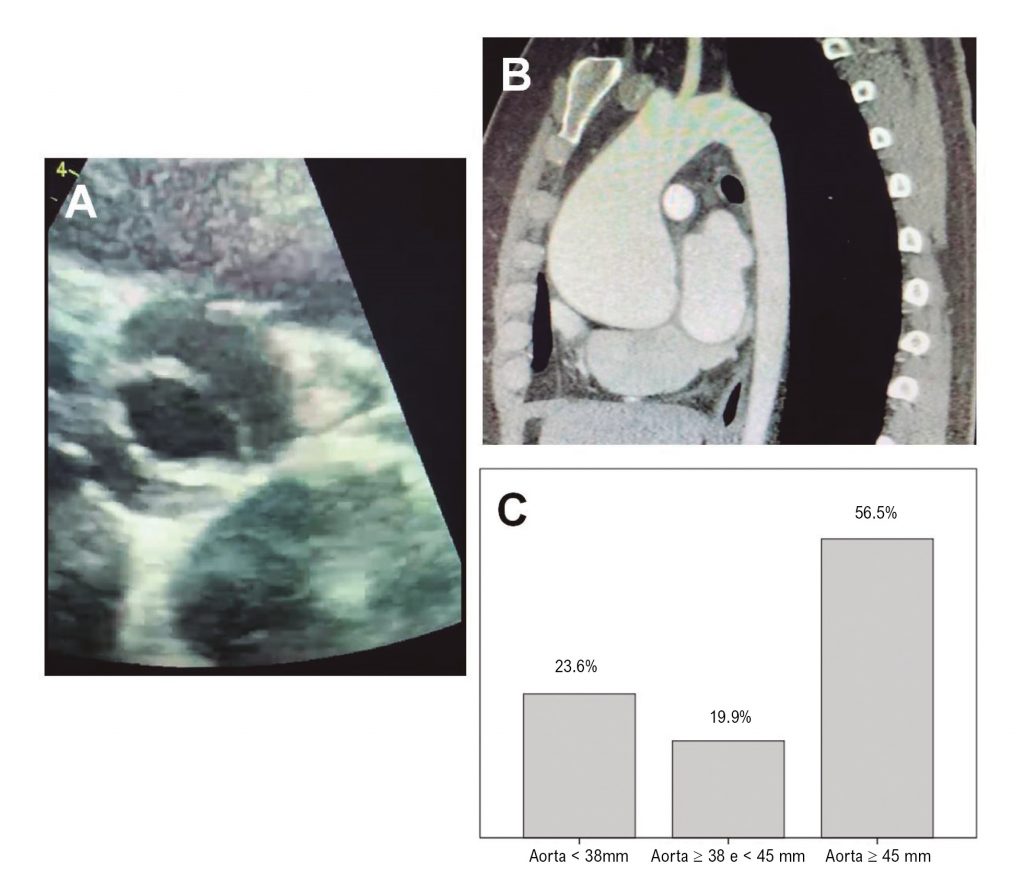Arq. Bras. Cardiol. 2022; 118(3): 588-586
Clinical Profile and 30-Day Outcomes of Patients with Bicuspid Aortic Valve Undergoing Aortic Valve and/or Aorta Surgery
This Original Article is referred by the Short Editorial "Clinical Profile and Outcomes in 30 Days of Patients with Bicuspid Aortic Valve Undergoing Aortic Valve and/or Aortic Surgery".
Abstract
Background
The bicuspid aortic valve (BAV) affects 0.5 to 2% of the population and is associated with valve and aortic alterations. There is a lack of studies on the profile of these patients in the Brazilian population.
Objective
To describe the profile of patients with BAV undergoing valve and/or aortic surgery in a tertiary cardiology center, in addition to the outcomes related to the intervention.
Methods
Retrospective cohort including 195 patients (mean age 54±14 years, 73.8% male) diagnosed with BAV who underwent surgical approach (valvular and/or aorta) from 2014 to 2019. Clinical data, echocardiographic and tomographic studies were evaluated, as well as characteristics of the intervention and events in 30 days. A value of p<0.05 was considered statistically significant.
Results
We found a high prevalence of aortic aneurysm (56.5%), with a mean diameter of 46.9±10.2 mm. Major aortic regurgitation was found in 25.1% and major aortic stenosis in 54.9%. Isolated aortic valve surgery was performed in 48.2%, isolated aortic surgery in 6.7% and combined surgery in 45.1%. The 30-day mortality was 8.2%. In the multivariate analysis, the predictors of the combined outcome at 30 days (death, atrial fibrillation and reoperation) were age (OR 1.044, 95% CI 1.009-1.081, p=0.014) and left ventricular mass index (OR 1.009, 95% CI 1.000-1.018, p=0.044).
Conclusion
Patients with BAV approached in our service have a higher incidence of aortopathy, with the additional need to evaluate the aorta with computed tomography or magnetic resonance imaging.
Keywords: Aortic Valve; Aortic Valve Stenosis; Thoracic Surgery
1,842

